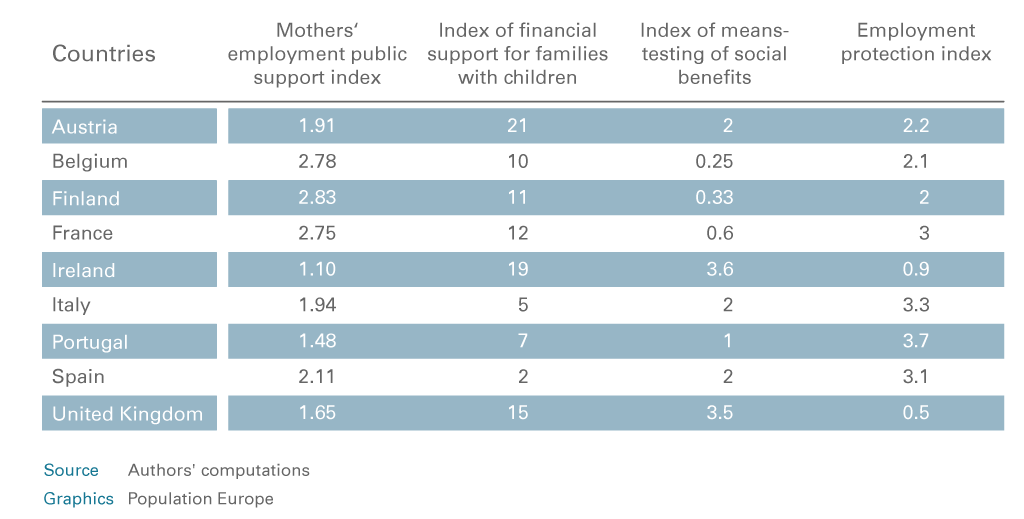Increasing rates of children living below the poverty line have become a concern for most European countries. This risk is especially high for single-parent families and for families where both parents are jobless. However, little is known about the opposite relation: Does having children increase the risk that neither partner of a couple works? In a recent study, Juho Härkönen explores this question and the role of policies.
Using data from the European Community Household Panel (ECHP) 2003 Härkönen compares the situation in nine European countries: Austria, Belgium, Finland, France, Ireland, Italy, Portugal, Spain and the UK. His results show that the total share of couples without employment is especially high in Ireland and Spain. The rate of dual joblessness in couples is higher for those with, then for those without children in all countries.
The most significant differences between the two groups were found in the UK and Ireland, whereas in Finland, France and Austria it was only marginal. In all countries except Belgium and Ireland, the percentage was especially high in families with children under the age of three (see figure 1).

Figure 1: Country-comparison of dual joblessness rates
Looking at the duration of these child-related unemployment periods, there were also significant country-differences: Whereas in Finland and France the risk decreases relatively quickly as the child gets older, this process is slower in the UK and in Ireland it hardly happens at all.
When taking into account the number of children in a family, the research results suggest it is only relevant in Finland, France, Ireland, Portugal and the United Kingdom. Here the rate of dual worklessness increased with additional children, and especially so in the UK and Ireland. In both countries having three or more children leads to a figure twice as high as the one for couples with just one child.
Gendered Work Patterns
The study also takes a closer look at the work patterns of the couple around childbirth. As expected it shows a high degree of gender differences. Whereas most men’s work patterns did hardly change, the share of working women started to decline around the beginning of pregnancy and reached its lowest point immediately after childbirth. However, the research suggests, that in most countries most women who worked 12 month before childbirth did so again 12 month afterwards. The big exception in this context were Finland, where the percentage dropped from around 60% working women 12 month before childbirth to just over 40% when the child was 1 year old, and Austria where the decline was even steeper: from around 60% down to less then 20%.
No simple policy-correlations
The differences found between countries are further examined with regards to policy-differences. Härkönen creates an index focusing on financial support for families with children, public support for working mothers, employment protection and the question to what extent social benefits are means tested (see Table 1).

Table 1: Combined index of Index of relevant policy measures
Bringing theses indicators into relation to the degree of dual worklessness in a country showed mixed results. High degrees of support for mother’s employment like in Finland, France and Belgium correlate with relative low joblessness-rates for both partners. The exception is Portugal, which has the lowest dual-joblessness-rate in the sample does not score particularly high concerning the working mothers support. However, it does have the highest employment protection index and at the same time a very low level of financial support for families with children.
Ireland and the UK, the two countries where having children had the most significant effect on the unemployment-rate of both partners, show a high degree of means-testing when it comes to social benefits. This is often seen as a disincentive to take up paid work, yet Härkönen points out both countries also have a very low degree of employment protection for parents and low levels of support for working mothers which he found to be more relevant.
He also suggests that means testing, as well as employment protection might have contradictory effects: They decrease the immediate impact that children have on double-worklessness, but they also seem to slow down the chances of return into employment as the children get older. According to this study, there is no simple correlation between policy-measures and the risk of parents to both face unemployment. However, social and labour market policies in a country influence the effect that age and number of children have.
This PopDigest is also available in French, Spanish and German.
This volume has been published with financial support of the European Union in the framework of Population Europe.